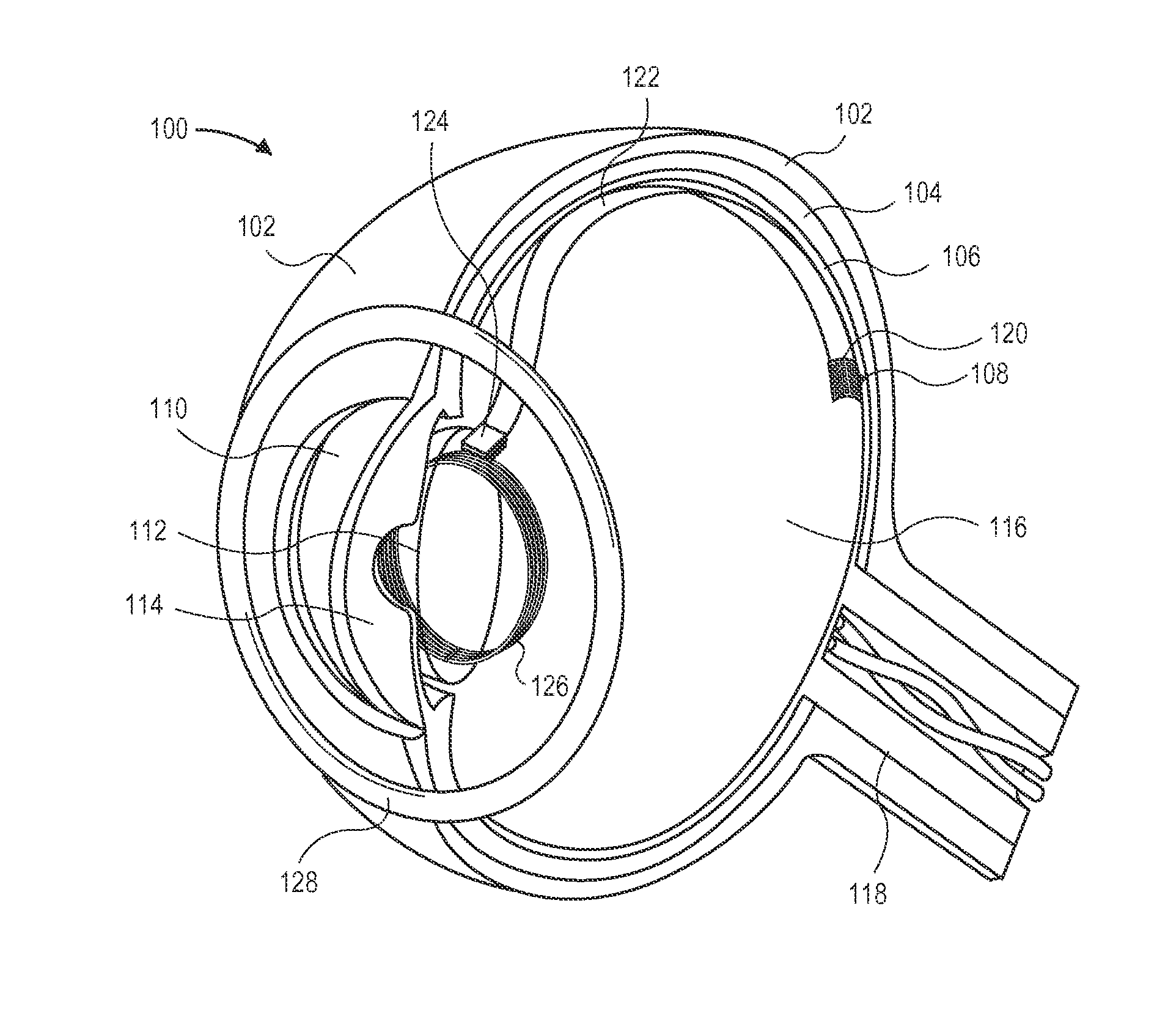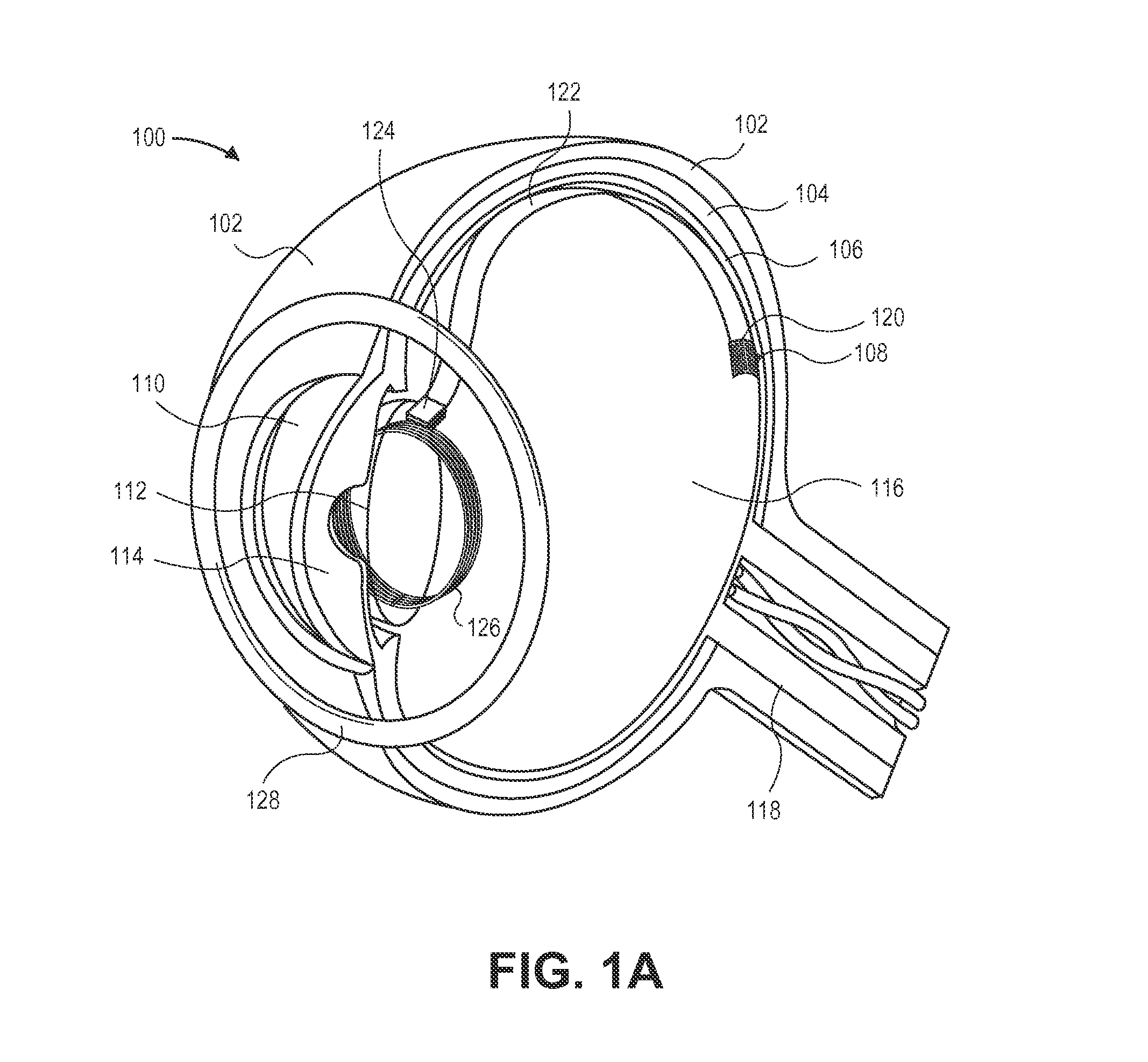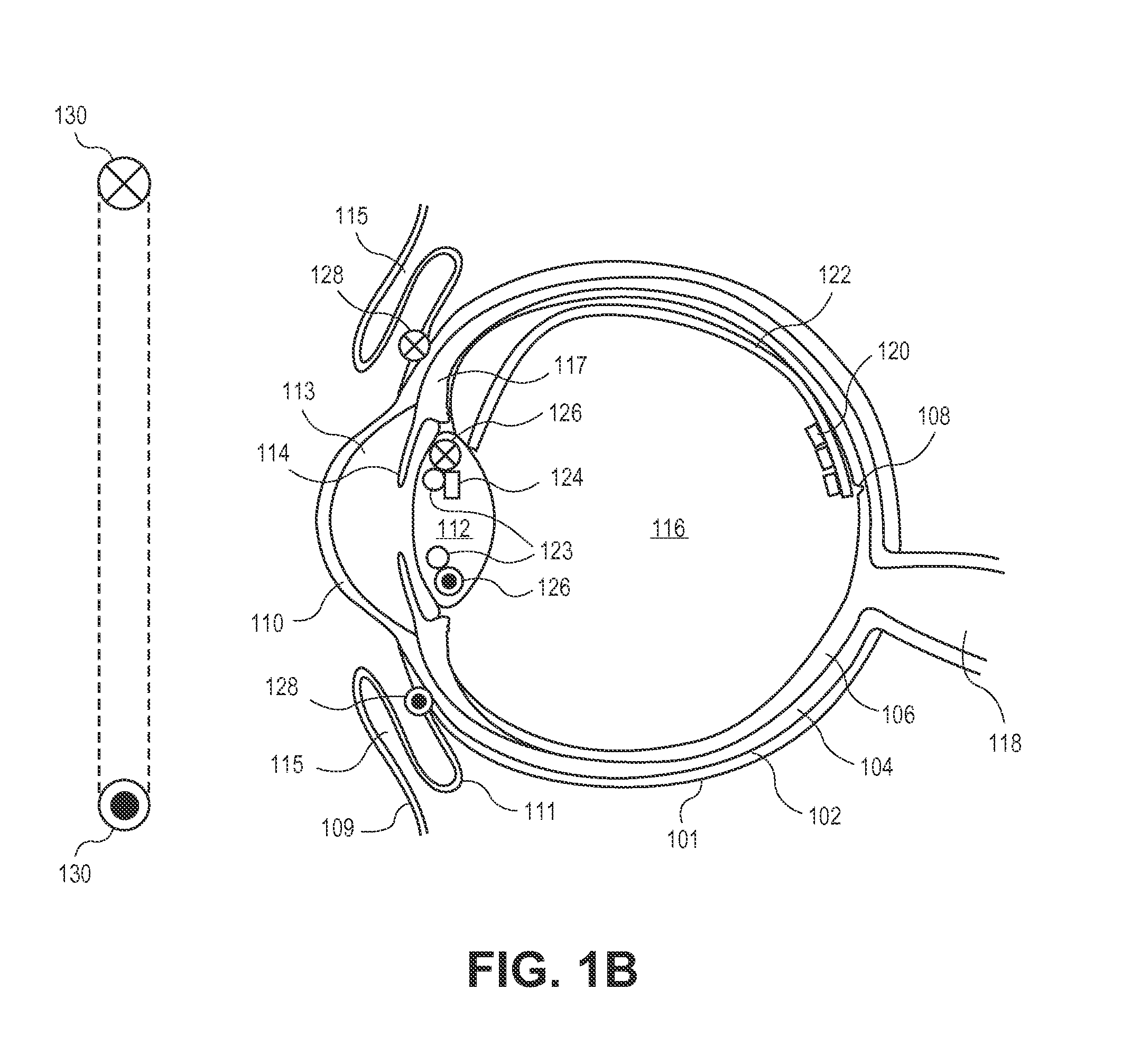3-coil wireless power transfer system for eye implants
- Summary
- Abstract
- Description
- Claims
- Application Information
AI Technical Summary
Benefits of technology
Problems solved by technology
Method used
Image
Examples
Embodiment Construction
[0074]A three-coil power transmission system for implanted devices offers many technical benefits. The third, buffer coil increases efficiency of power transmission between the transmitter coil and receiver coil. It also allows another set of design parameters with which to work so that a receiver coil (or transmitter coil) may be sized for small, constrained spaces. A three-coil structure can tolerate larger misalignments in the X-Y plane between coils than a two-coil structure. This can be important for cases in which the receiver coil is buried in the body and not visible, so an exact determination of its location is unknown. It can also help mitigate voluntary or involuntary movements of a subject, keeping efficiency high. Further, a three-coil structure can tolerate larger angular misalignments between coils than a two-coil structure. The coils do not need to be aligned as much. This may be especially important with blind people who cannot fixate their eyes in a certain positio...
PUM
| Property | Measurement | Unit |
|---|---|---|
| Length | aaaaa | aaaaa |
| Length | aaaaa | aaaaa |
| Power | aaaaa | aaaaa |
Abstract
Description
Claims
Application Information
 Login to View More
Login to View More - R&D
- Intellectual Property
- Life Sciences
- Materials
- Tech Scout
- Unparalleled Data Quality
- Higher Quality Content
- 60% Fewer Hallucinations
Browse by: Latest US Patents, China's latest patents, Technical Efficacy Thesaurus, Application Domain, Technology Topic, Popular Technical Reports.
© 2025 PatSnap. All rights reserved.Legal|Privacy policy|Modern Slavery Act Transparency Statement|Sitemap|About US| Contact US: help@patsnap.com



